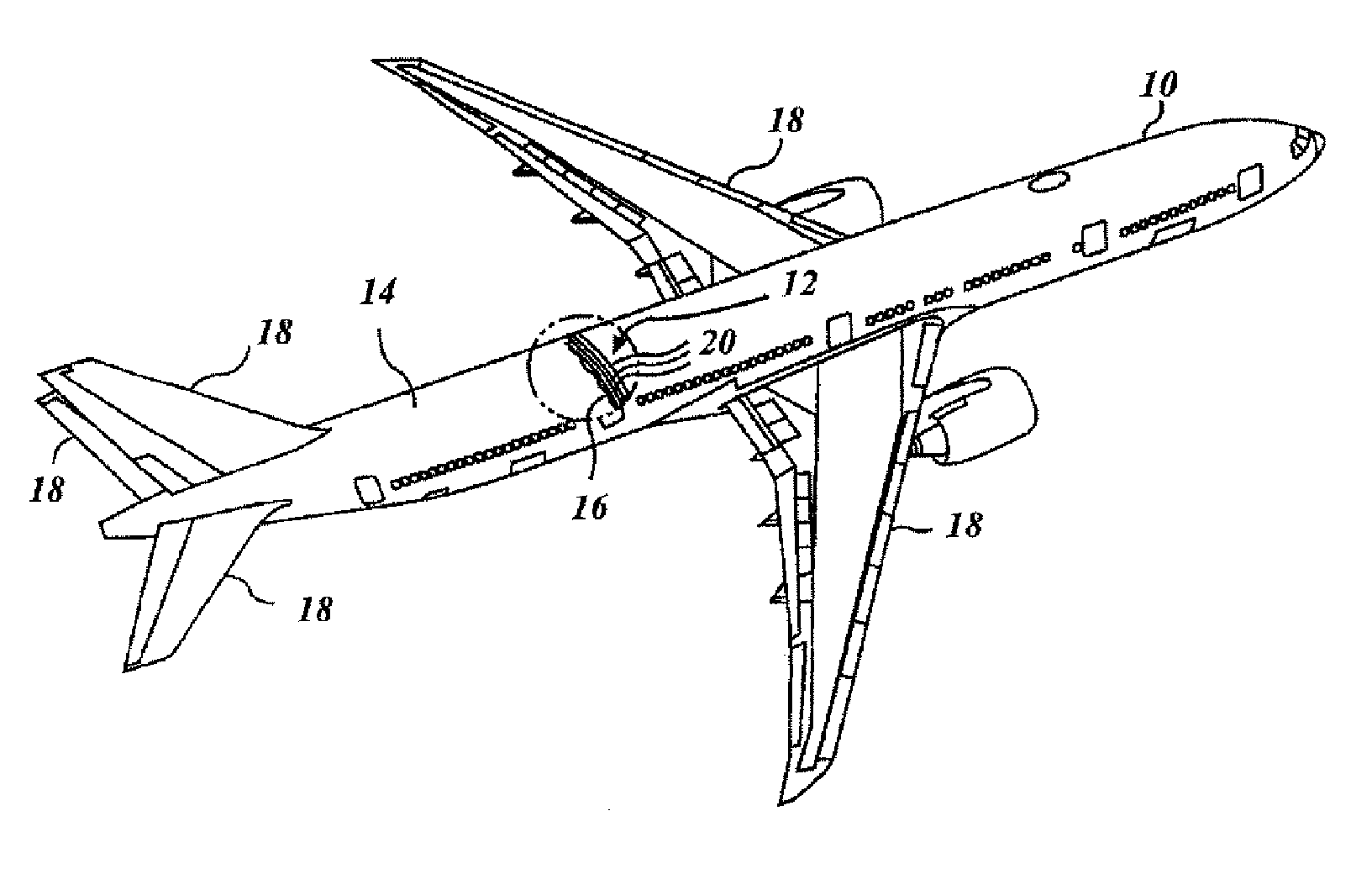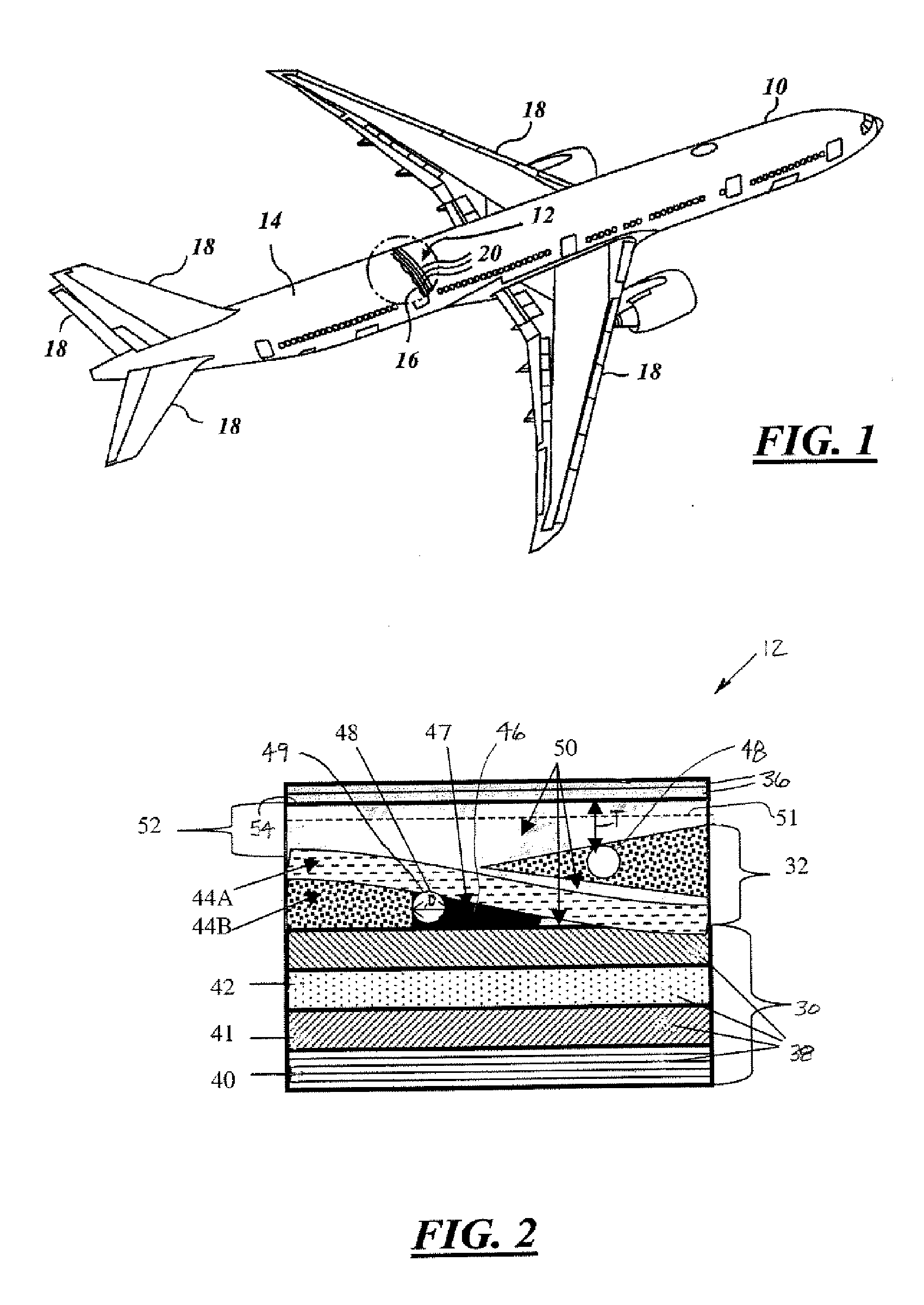Environmentally stable hybrid fabric system for exterior protection of an aircraft
a fabric system and aircraft technology, applied in the field of aircraft exterior coatings, layers, surfaces and composites, can solve the problems of increased processing costs, inability to meet the requirements of high-use commercial aircraft, and inability to meet the requirements of high-use aircraft, etc., to achieve the effect of reducing processing costs
- Summary
- Abstract
- Description
- Claims
- Application Information
AI Technical Summary
Benefits of technology
Problems solved by technology
Method used
Image
Examples
Embodiment Construction
[0018] It has been determined through testing that under high use aircraft operating conditions that lightning protective structures containing carbon fiber with metal wires, which is disposed within an epoxy resin tend to experience substrate microcracking and finish cracking. The present invention overcomes this and is described in detail below. While the present invention is described primarily with respect to the formation of an exterior protective structure for an aircraft, the present invention may be applied and adapted to various applications. The present invention may be applied in aeronautical applications, power applications, nautical applications, railway applications, automotive vehicle applications, medical applications, and commercial and residential applications where the need for a durable lightning protective structure that exhibits minimal or no weave telegraphing is desired and particularly when weight or labor costs are of a concern. Also, a variety of other emb...
PUM
| Property | Measurement | Unit |
|---|---|---|
| thickness | aaaaa | aaaaa |
| temperature | aaaaa | aaaaa |
| diameter | aaaaa | aaaaa |
Abstract
Description
Claims
Application Information
 Login to View More
Login to View More - R&D
- Intellectual Property
- Life Sciences
- Materials
- Tech Scout
- Unparalleled Data Quality
- Higher Quality Content
- 60% Fewer Hallucinations
Browse by: Latest US Patents, China's latest patents, Technical Efficacy Thesaurus, Application Domain, Technology Topic, Popular Technical Reports.
© 2025 PatSnap. All rights reserved.Legal|Privacy policy|Modern Slavery Act Transparency Statement|Sitemap|About US| Contact US: help@patsnap.com



